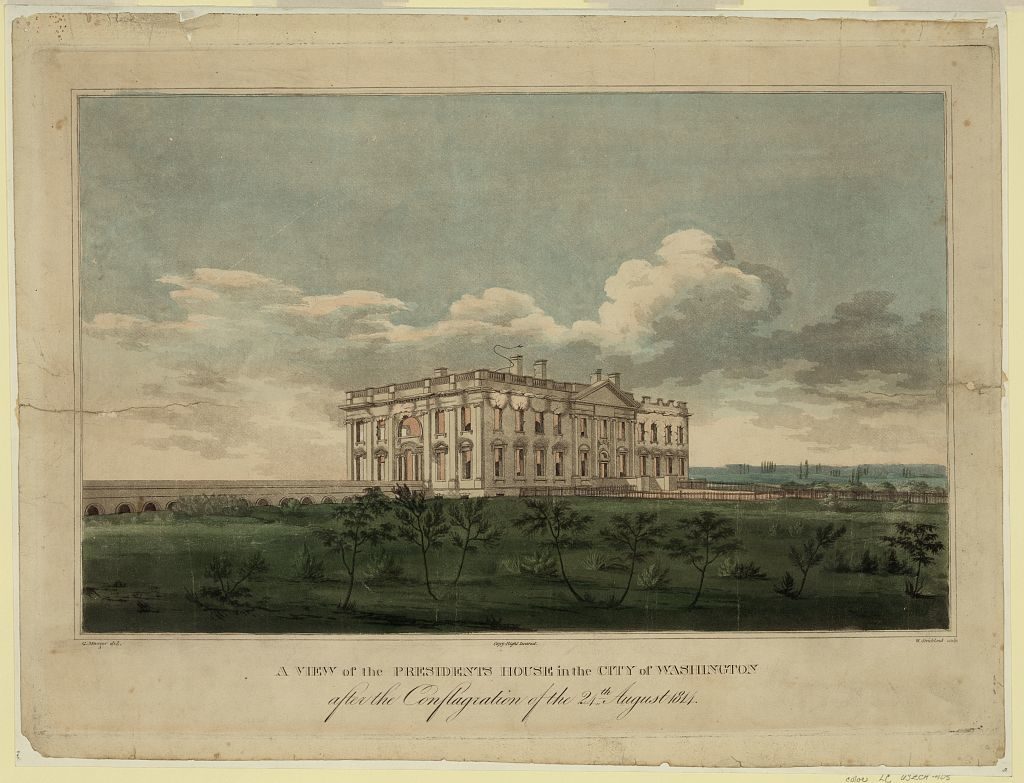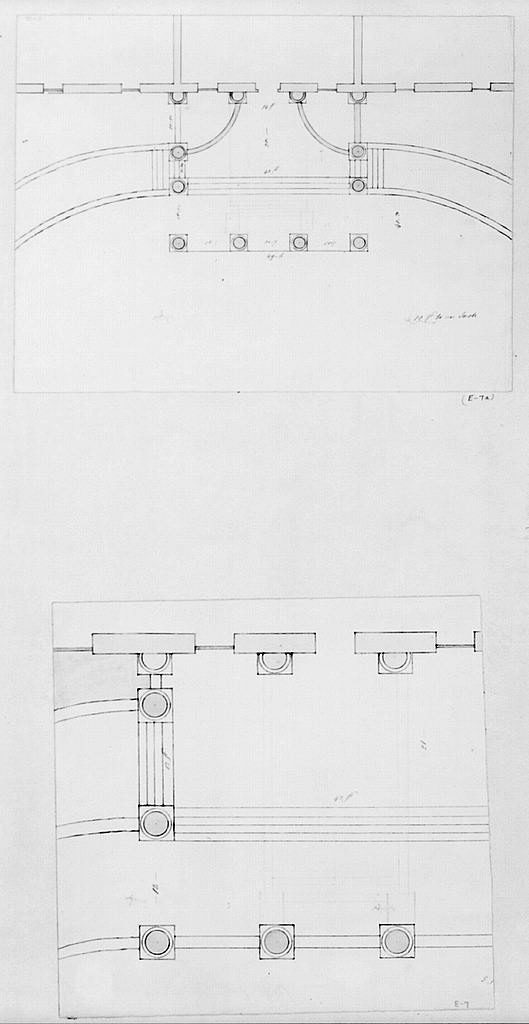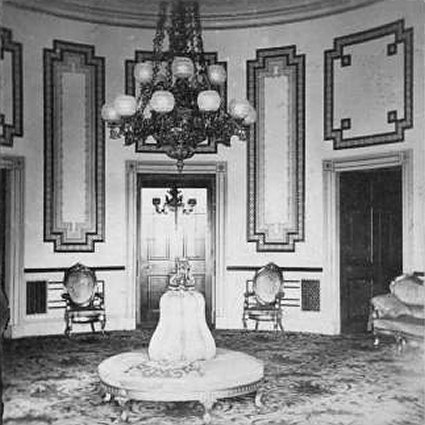Divisible into three distinct architectural transformations, the period of 1814 – 1872 brought fires, additions, water, and conservatories to the White House.
Let it burn, but take George with you!
The War of 1812 brought many scuffles between the Americans and British Empire. These battles took place primarily in the Great Lakes region up until August, 1814 when British troops challenged President James Madison and the defending American army to a battle in Bladensburg, Maryland just outside of DC. First Lady Dolly Madison was warned of the invading army and fled the White House, most famously bringing with her the full-length portrait of George Washington.
The British, recognizing their lack of manpower for a true DC takeover, simply aimed to cause destruction in DC. Fights ensued, niceties were ignored, and the British left no government and military buildings unburned – including the White House.

Strickland, William. A view of the Presidents house in the city of Washington after the conflagration of the 24th August 1814. 1814. Photograph. Lib. of Cong., Washington D.C. Lib. of Cong. Web. 30 June 2016.
Upon returning to the ruins, President Madison vowed to restore the White House to its former glory. Original architect, James Hoban, was brought back to ensure that the reconstruction was accurate to the original design. President James Monroe completed the reconstruction in 1817 and decorated the White House in the fashionable style of the day. Some of this décor is still present in the White House today, including gilded furnishings in the Blue Room.
An era of modern invention
Although President Thomas Jefferson had asked for architectural changes, including pavilions on the east and west sides of the White House, the famous north and south porticos were not added until the late 1820s by Hoban.

Bulfinch, Charles. The White House, Washington, D.C. Plan of portico and curved driveway. 1828. Photograph. Lib. of Cong., Washington D.C. Lib. of Cong. Web. 30 June 2016.
There were also quite a few modern luxuries installed during this time:
- 1833: running water becomes available in the White House
- 1837: central heating system installed
- 1848: gaslighting to replace candles and oil lamps installed
- 1853: hot running water piped into the second floor bathroom for the first time
After the war
After the Civil War (1861 – 1865) and the assassination of Abraham Lincoln, the White House fell into disrepair. Incoming First Lady Eliza Johnson found herself suffering from tuberculosis, so her daughter Martha was left in charge of renovating and redecorating the White House.

The White House Blue Room, 1867, New York Public Library
Mrs. Martha Patterson brought contemporary interior design to the White House, including patterns, fabrics and color choices that had notes of Ancient Greece mixed with modern Victorian elements. Glass conservatories on the east and west side were also constructed around this time (an earlier conservatory burnt down in 1867).
Stay tuned for part three of this four part series!
Alexandra Isham is Design Program Manager at NAHB.

